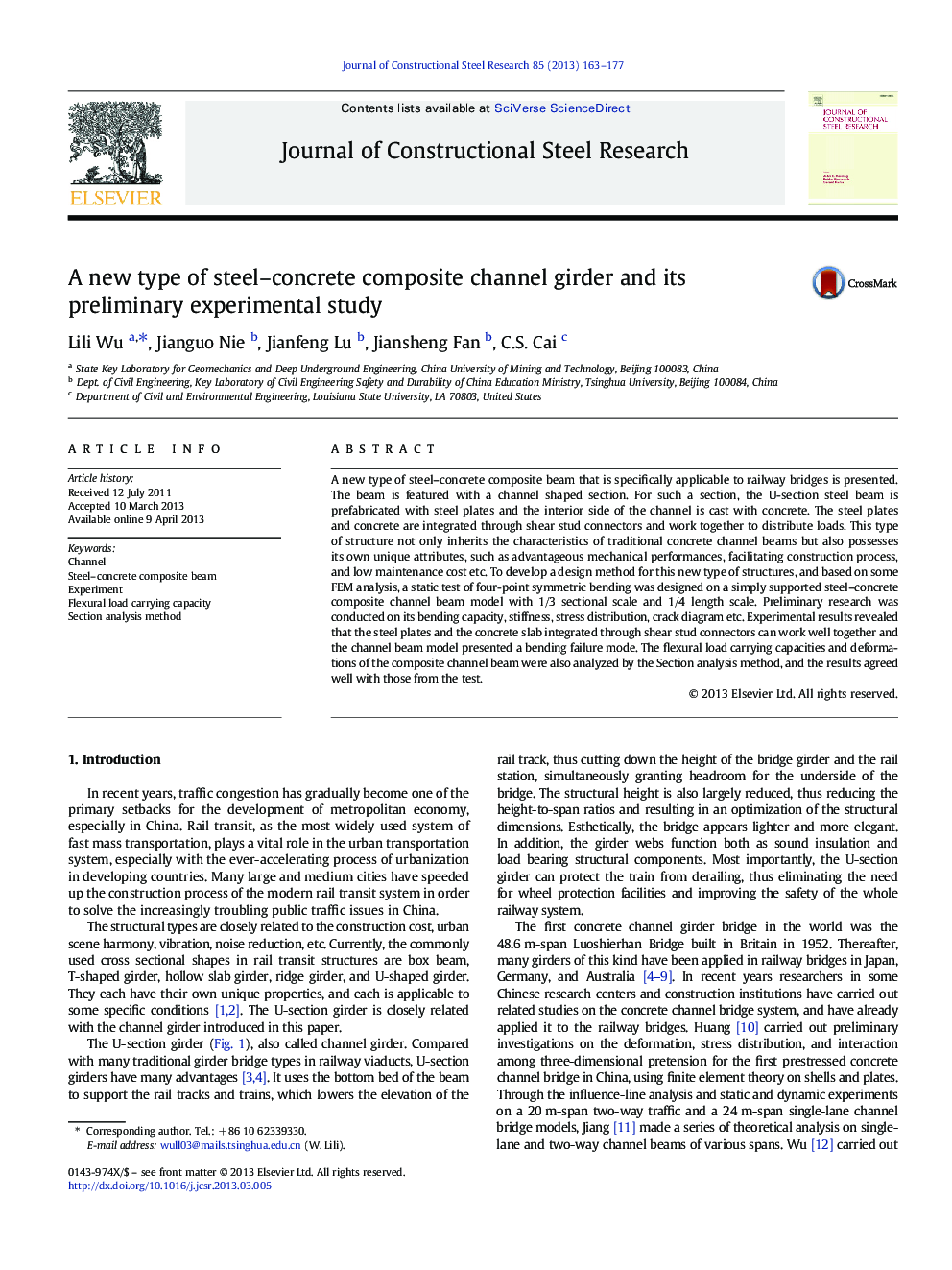| Article ID | Journal | Published Year | Pages | File Type |
|---|---|---|---|---|
| 284994 | Journal of Constructional Steel Research | 2013 | 15 Pages |
•A new type of steel-concrete composite channel (U-section) girder is introduced.•A static test was designed on a simply supported composite channel beam model.•The steel plates and the concrete slab worked together well through shear studs.•The beam model presented a typical bending failure when reaching ultimate failure.•The Section Analysis Method is suitable for the new composite channel beam.
A new type of steel–concrete composite beam that is specifically applicable to railway bridges is presented. The beam is featured with a channel shaped section. For such a section, the U-section steel beam is prefabricated with steel plates and the interior side of the channel is cast with concrete. The steel plates and concrete are integrated through shear stud connectors and work together to distribute loads. This type of structure not only inherits the characteristics of traditional concrete channel beams but also possesses its own unique attributes, such as advantageous mechanical performances, facilitating construction process, and low maintenance cost etc. To develop a design method for this new type of structures, and based on some FEM analysis, a static test of four-point symmetric bending was designed on a simply supported steel–concrete composite channel beam model with 1/3 sectional scale and 1/4 length scale. Preliminary research was conducted on its bending capacity, stiffness, stress distribution, crack diagram etc. Experimental results revealed that the steel plates and the concrete slab integrated through shear stud connectors can work well together and the channel beam model presented a bending failure mode. The flexural load carrying capacities and deformations of the composite channel beam were also analyzed by the Section analysis method, and the results agreed well with those from the test.
